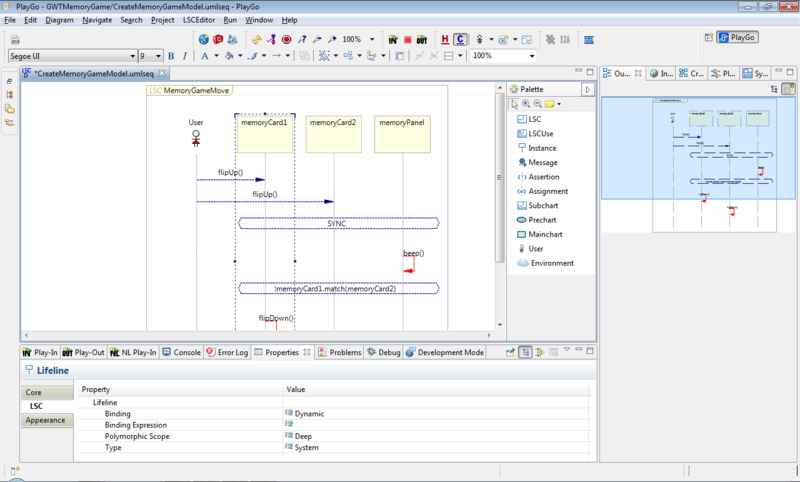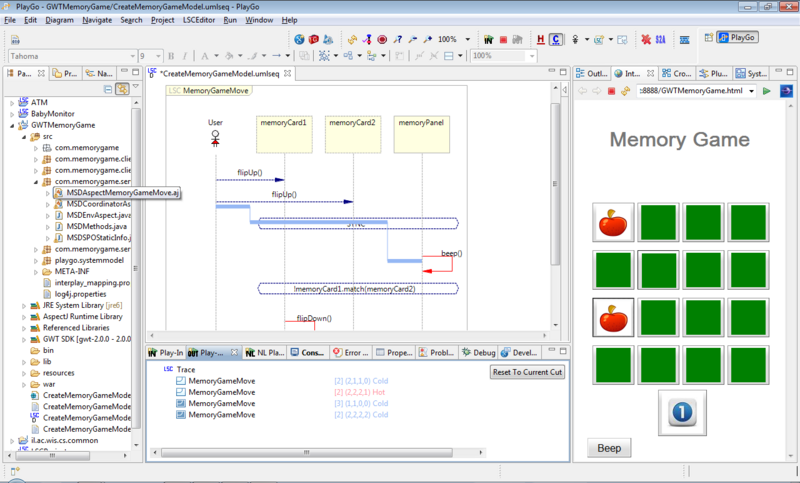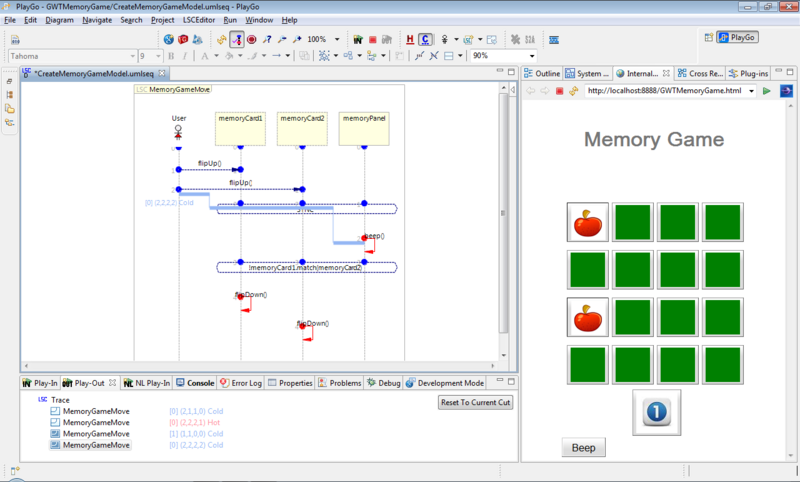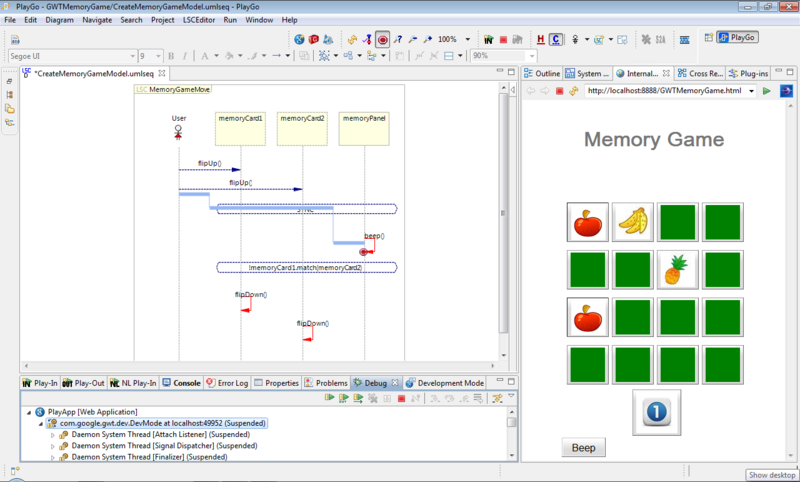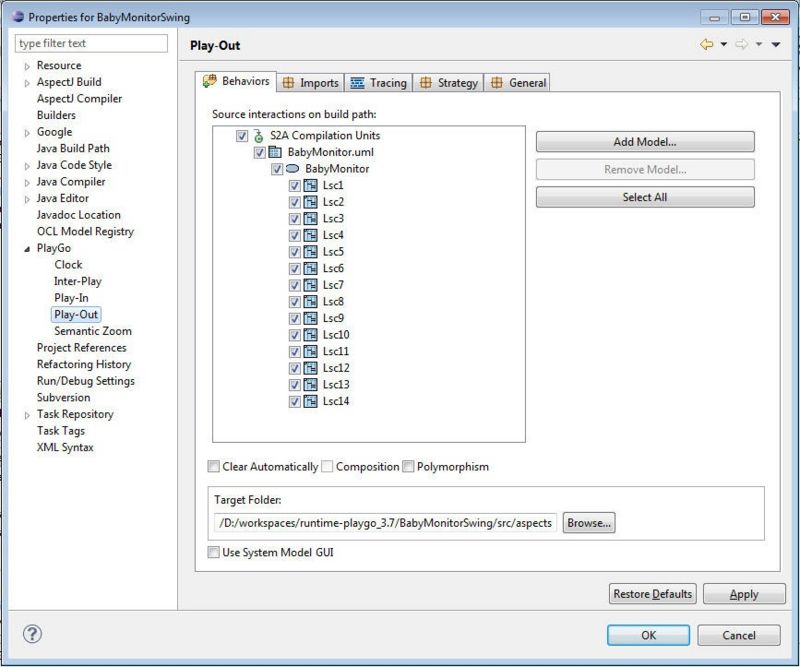Difference between revisions of "PlayGo Screenshots"
(→Play-out properties) |
|||
| (3 intermediate revisions by one user not shown) | |||
| Line 31: | Line 31: | ||
---- | ---- | ||
| − | === | + | ===Play-out properties=== |
| − | [[Image: | + | [[Image:playout.properties.jpg | Play-out Properties | 800px]] |
| − | <span style="color: rgb(39,64,139);"><span style="font-family: Tahoma;">A properties dialog for | + | <span style="color: rgb(39,64,139);"><span style="font-family: Tahoma;">A properties dialog for play-out, allowing the engineer to select which LSCs should be compiled etc. |
</span></span> | </span></span> | ||
<br/><br/><br/> | <br/><br/><br/> | ||
Latest revision as of 07:23, 2 December 2012
Contents
The LSC editor
Note the red and blue elements in the diagram, indicating hot and cold LSC messages and conditions. Note also the Properties pane at the bottom of the screen, currently showing the properties of the selected lifeline "memoryCard1": its binding is "dynamic", its polymorphic scope is "deep", and its type is "system"
Play-out
Demonstrating play-out and watching an LSC specification during its execution. On the left, the generated Java aspect file. At the center, the active LSCs, annotated with their current cuts. On the right, the GUI of the application under development (a Memory Game).
LSC debugger - cut and locations
Current cut is displayed and LSCs locations are highlighted
LSC debugger - breakpoints
Note the red circle on the right most lifeline of the LSC, indicating a user-defined breakpoint.
Play-out properties
A properties dialog for play-out, allowing the engineer to select which LSCs should be compiled etc.
